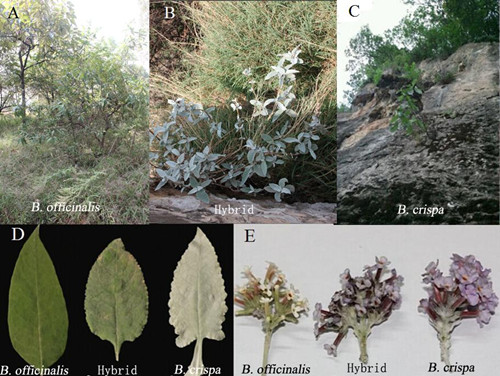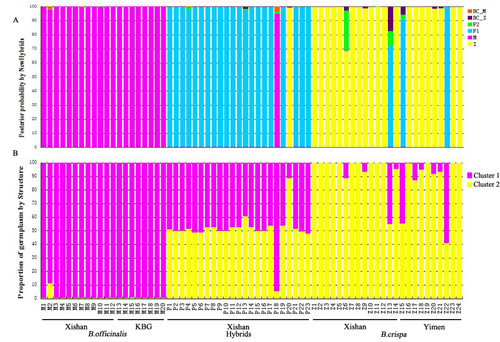Natural hybridization in plants is universal and plays an important role in evolution. Based on morphology it has been presumed that hybridization occurred in the genus Buddleja, though genetic studies confirming this assumption have not been conducted to date. The two species B. crispa and B. officinalis overlap in their distributions over a wide range in South-West China, and we aimed to provide genetic evidence for ongoing hybridization in this study.
The research group led by Prof. SUN Weibang from Kunming Institute of Botany, investigated the occurrence of hybrids betweenthe two species at the southern-most edge of the distribution of B. crispa using five nuclear loci and pollination experiments. The genetic data suggest substantial differentiation between the two species as species-specific alleles are separated by at least 7–28 mutations. The natural hybrids found were nearly all F1s (21 of 23), but backcrosses were detected, and some individuals, morphologically indistinguishable from the parental species, showed introgression. Pollen viability test shows that the percentage of viable pollen grains was 50 ± 4 % forB. crispa,and 81±2 %forB. officinalis. This difference is highly significant (t = 7.382, p< 0.0001). Hand cross-pollination experiments showed that B. crispa is not successful as pollen-parent, but B. officinalis is able to pollinate B. crispa to produce viable hybrid seed. Inter-specific seed-set is low (8 seeds per fruit, as opposed to about 65 for intra-specific pollinations), suggesting post-zygotic reproductive barriers. In addition, one of the reference populations also suggests a history of introgression at other localities.
The occurrence of morphologically intermediate individuals between B. crispa and B. officinalis at Xishan Mountain is unequivocally linked to hybridization and almost all examined individuals of the putative hybrids were likely F1s. Despite pollination experiments indicating higher chances for introgression into B. officinalis (hybrids only produced viable seed when crossed with B. officinalis), observed introgression was asymmetrical into B. crispa.This could be due to seeds produced by hybrids not contributing to seedlings, or other factors favoring the establishment of backcrosses towards B. crispa. However, further research will be needed to confirm these observations, as the small number of plants used for the pollination experiments could have introduced an artifact, for example if used individuals were more or less compatible than the species average, and also the small number of loci used could convey a picture of introgression that is not representative for the whole genome.
This paper entitled “Natural hybridization and asymmetric introgression at the distribution margin of two Buddleja species with a large overlap”was published in BMC Plant Biology (http://www.biomedcentral.com/1471-2229/15/146).
Fig. 1Habitats (a, b, c), leaf (d) and flower characteristics (e) of B. officinalis, B. crispa and the putative hybrids

Fig. 2 Genotype class assignment by NewHybrids (a) and clustering analysis by STRUCTURE (b) for B. officinalis, B. crispa and putative hybrid individuals, based on sequence data of four low-copy nuclear genes and the nrETS region




